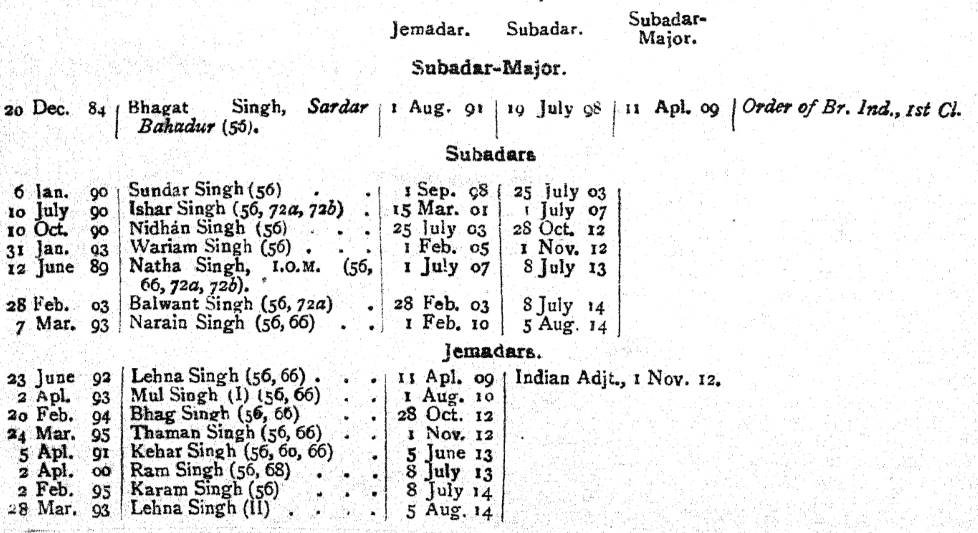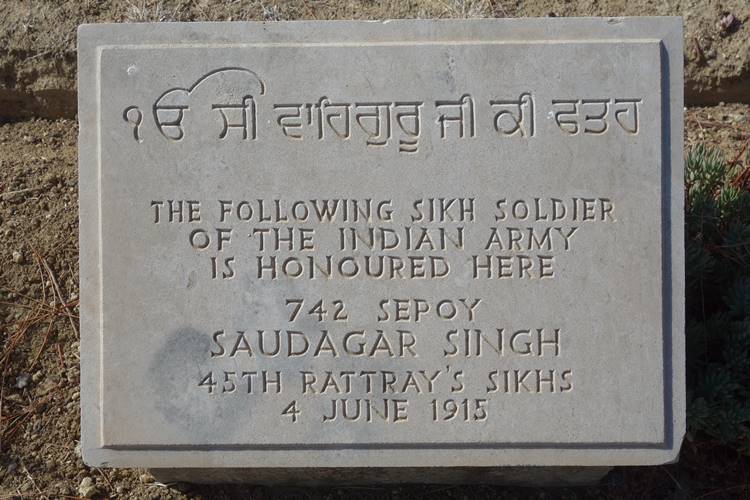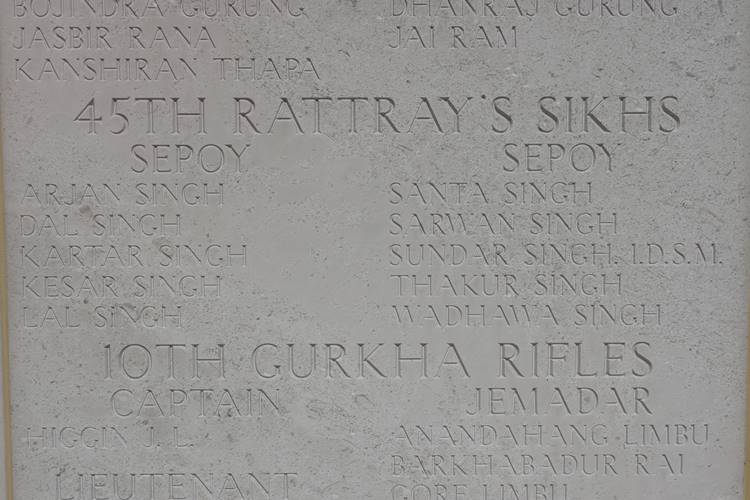This article is about the 45th Rattray’s Sikhs and will help you to research the Regiment and those who served with it during the First World War. I have also written a series of guides to help you research soldiers who served in the Indian Army during the war:
The 45th Rattray’s Sikhs in the First World War
Lineage: Raised by Captain Thomas Rattray at Lahore in 1856 as the Bengal Military Police Battalion. Then the 1st Bengal Military Police Battalion in 1858, the 45th (Rattray’s Sikh) Regiment of Bengal Native Infantry in 1864, the 45th (Rattray’s Sikh) Regiment of Bengal Infantry in 1885, the 45th (Rattray’s) Sikh Infantry in 1901 and the 45th Rattray’s Sikhs in 1903. In 1922 became the 3rd Battalion, 11th Sikh Regiment.
Class Composition in 1914: 8 Companies of Sikhs. 1919: 4 Companies of Sikhs.
Location in July 1914: The 45th Sikhs was stationed at Dera Ismail Khan (Khyber Pakhtunkhwa, Pakistan) having arrived from Nasirabad (Rajasthan, India) on 24th December 1911.
The 45th Rattray’s Sikhs was an Indian infantry regiment which served in Mesopotamia (Iraq) during the First World War. When the First World War began in August 1914, the 45th Rattray’s Sikhs was serving with the Derajat Brigade at Dera Ismail Khan. Though the 45th Rattray’s Sikhs did not proceed overseas for nearly two years, it provided a large number of drafts to the 15th and 47th Sikhs. On 1 December 1914, the Regiment moved to Tank before returning to Dera Ismail Khan on 24 December. The Regiment returned to Tank at the end of January 1915 and remained there until January 1916 when the Regiment was ordered to mobilise for service in Mesopotamia (Iraq). The 45th Sikhs subsequently moved to Dera Ismail Khan and prepared itself for service abroad. The extract below was taken from the October 1914 Indian Army List and shows the Indian officers serving with the Regiment. The numbers in brackets after their names, except for the two with Roman numerals, refer to courses passed and there is a list at the start of the book.

The 45th Rattray’s Sikhs did not take part in the relief attempts and for the Regiment’s activities for the rest of the year, the regimental history and war diaries provide a detailed account. During the year the Regiment was decimated by scurvy and in December took part in General Maude’s offensive up the Tigris. In 1922 the 45th Rattray’s Sikhs became the 3rd Battalion 11th Sikh Regiment.
Below is the grave of 742 Sepoy Saudagar Singh, 45th Rattray’s Sikhs attached 14th Ferozepore Sikhs who was killed in the charge at Gully Ravine on 4 June 1915 during the Gallipoli Campaign. As the 45th Sikhs stayed in India until 1916, they sent drafts to other regimens including the 14th and 15th Sikhs and Saudagar Singh was one these men.
War Diaries of the 45th Sikhs
There are three war diaries for the 45th Sikhs and all have been digitized by the National Archives. To download each war diary for a small fee click on the blue links below which will take you to the National Archives’ website.
- Date: 01 March 1916 – 31 January 1917
- 37th Indian Infantry Brigade, 14th Indian Division, Mesopotamia
- Reference: WO 95/5181/2
- Notes: A very good war diary which contains very detailed information concerning the activities of the 45th Rattray’s Sikhs. November 1916 contains a number of small cross-sections of the trenches dug by the 45th Rattray’s Sikhs. The only appendix is a plan of Wadi Post, May 1916.
- Date: 01 February – 30 August 1917
- Tigris Defences and Communications
- Reference: WO 95/5018/7
- Notes: A slightly more detailed war diary than is usually found for a regiment serving on the lines of communication.
- Date: 01 September 1917 – 24 April 1920
- 52nd Indian Infantry Brigade, 17th Indian Division
- Reference: WO 95/5213/5
- Notes: Overall a good war diary. There is a list of British officers serving with the Regiment on 1 January 1918 along with their distribution within the 45th Sikhs. British officers are frequently mentioned and there are monthly rolls of the British officers serving with the Regiment for many of the 1918 months. There is also a nominal roll of British officers for December 1919.
Further Sources for the 45th Rattray’s Sikhs
If you’d like to find out more information regarding a British or Indian officer who served with the 45th Rattray’s Sikhs the Indian Army List can be consulted. A good resource for the 45th Sikhs is its annual confidential reports held at the British Library: Confidential Reports on Regiments etc. These reports also contain the annual confidential reports of the British officers serving with it. Though, when the 45th Sikhs was abroad only its Depot and the officers serving with it were reported on
There is also an excellent regimental history I’d highly recommend: Regimental History of the 45th Rattray’s Sikhs During the Great War and After 1914-1921 by Lieutenant-Colonel R. H. Anderson. This book has been reprinted by the Naval & Military Press and contains frequent mentions of both officers and men (with their regimental number) throughout. The book also benefits from being very readable. There is also a short chapter where Indian soldiers describe their experiences as prisoners of war of the Turks. Appendices include British and Indian Officers who served with the Regiment 1914-21, yearly casualty returns, Indian rank reinforcements, gallantry citations and actions for which awards were given.
Extracts from War Diaries of the 45th Rattray’s Sikhs
01 March 1916 – 31 January 1917, Mesopotamia, WO 95/5181/2
05- April 1916- Sailed at 5.30 am and sailed up to Qurnah reaching there at 2.20 pm. We tried to tie up to the bank at 5.30 pm but owing to the strong tide and the crosswind we were not fast till 6.35 pm. The men went ashore and cooked. During dinner the boat broke away from her moorings and was over an hour and a half getting back. Finally the men were got on board by the boat steaming against the current alongside the bank.
18 April 1916 – Since leaving SS Ekma altogether 2222 rounds have been found in the standing camps into which the regiment has moved. British regiments appear to leave ammunition in large quantities wherever they are camped. Camping grounds are generally left in a filthy condition, no attempt being made to collect refuse, tins etc. when the regiment leaves camp. In addition to this food is frequently left behind especially tins of bully beef.

